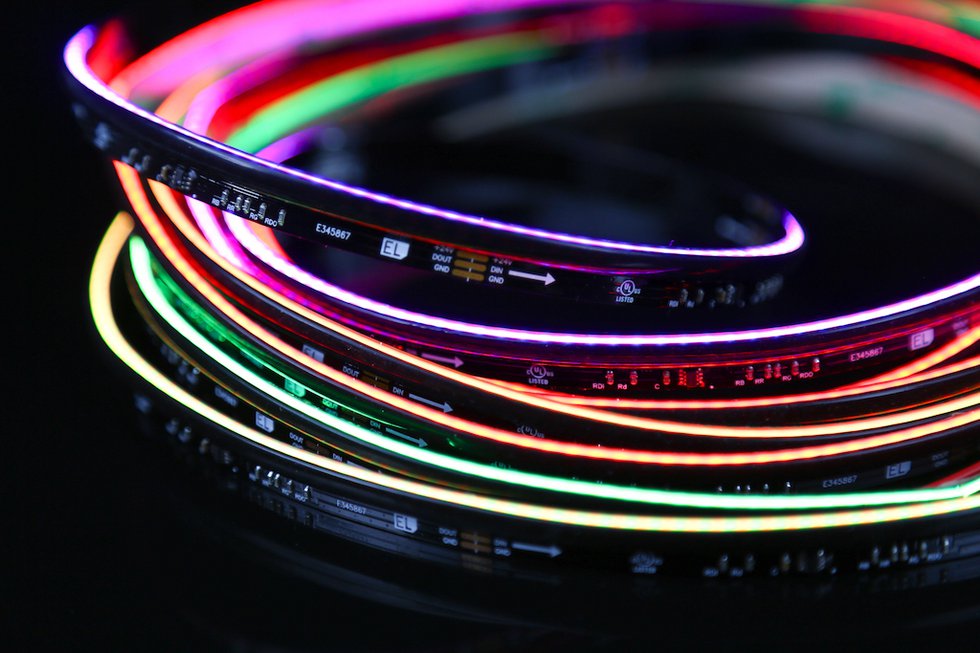
Choosing the Right LED Solutions: A Closer Look at Strip Lights and Modules
In recent years, LED lighting has transformed how we illuminate spaces offering energy efficiency, design flexibility, and long-lasting performance. As lighting needs become more specific, the choice between different LED products becomes increasingly important. Two popular solutions LED strip lights and LED modules serve distinct purposes across industries and environments. Understanding the role of each and where they fit best can help make smarter decisions for any lighting setup.
Understanding LED Strip Lights
LED strip lights, sometimes called tape lights, are known for their slim profile and flexibility. These lights are essentially a series of small LEDs mounted onto a flat strip, often backed with adhesive for easy installation. They’re highly versatile and can be bent around corners, cut to custom lengths, and installed in tight spaces where traditional lighting wouldn’t fit.
From under-cabinet kitchen lighting to accent lighting in retail stores, strip lights are favored for their subtle presence and ability to enhance the aesthetic of a room. They’re also popular for creative uses think ambient backlighting for TVs, outlining architectural features, or even custom signage.
The Value of Buying Wholesale LED Strip Lights
When larger projects require consistent lighting across multiple areas, purchasing LED strip lights in bulk becomes a practical option. Ordering in volume helps ensure color uniformity, product consistency, and reduced costs over time.
For professionals working on commercial or architectural installations, working with a source for wholesale led strip lights provides access to dependable stock and potential customization options. Whether you’re outfitting a hotel lobby or planning lighting for a trade show booth, the ability to order uniform, high-quality strips in quantity can save time and avoid compatibility issues.
What Are LED Modules and How Are They Used?
LED modules are compact units that contain one or more LEDs, often enclosed in protective casings. Unlike flexible strip lights, modules are rigid and designed for focused, powerful lighting. These are frequently used in signage, channel letters, backlighting for displays, or areas requiring high brightness and clarity.
Modules are designed to withstand outdoor conditions, making them ideal for external signage or installations exposed to the elements. The modular design also makes them easy to install and replace individually, offering flexibility when designing or maintaining lighting systems.
Key Traits of Reliable LED Module Suppliers
Not all LED modules are created equal, which makes the choice of supplier a significant consideration. Durability, brightness consistency, and safety certifications all play a role in ensuring the product performs well over time.
When evaluating led module suppliers, it’s important to consider whether they offer a range of configurations, color temperatures, and lens options to suit different applications. Equally important is how they support their products through documentation, technical specs, and after-sales assistance.
Suppliers with a strong understanding of the practical demands of lighting projects are better equipped to provide modules that meet both aesthetic and functional needs.
Comparing LED Strip Lights and LED Modules
While both LED strip lights and modules serve lighting purposes, they cater to different requirements.
LED strip lights excel in decorative and ambient applications where flexibility, discreet design, and continuous lighting are priorities. They are ideal for subtle highlighting and creative installations where light needs to bend and conform to surfaces.
LED modules, on the other hand, are about targeted brightness and durability. Their concentrated light output and weather-resistant construction make them more suitable for commercial signage, high-impact displays, or environments with specific lighting intensity needs.
Understanding the use case helps determine which option fits better. In many scenarios, both products might be used together for instance, strip lights for interior atmosphere and modules for external branding.
Conclusion
Choosing between LED strip lights and modules comes down to the details of your lighting goals. Strip lights offer design freedom and subtlety, while modules deliver power and precision. Each plays a different but complementary role in today’s lighting projects.
When planning installations, whether for home, retail, or industrial use, it’s essential to think beyond just brightness. Factors like energy use, placement flexibility, and long-term reliability should shape the decision.
By knowing when to opt for wholesale LED strip lights and how to identify trustworthy LED module suppliers, decision-makers can create lighting systems that are not only functional but thoughtfully tailored to their environment. The right choices lead to better outcomes both in performance and in the experience created by light itself.








